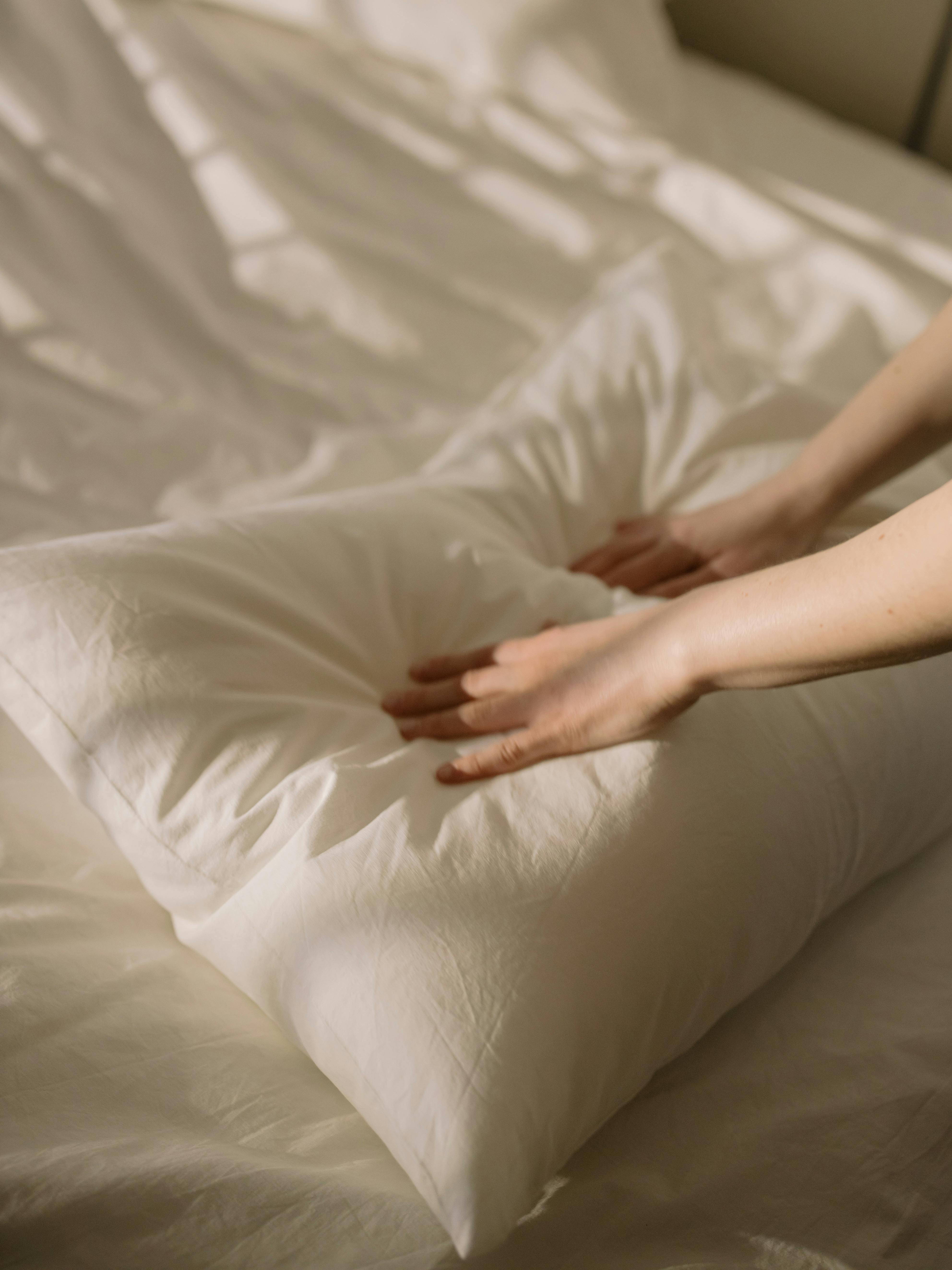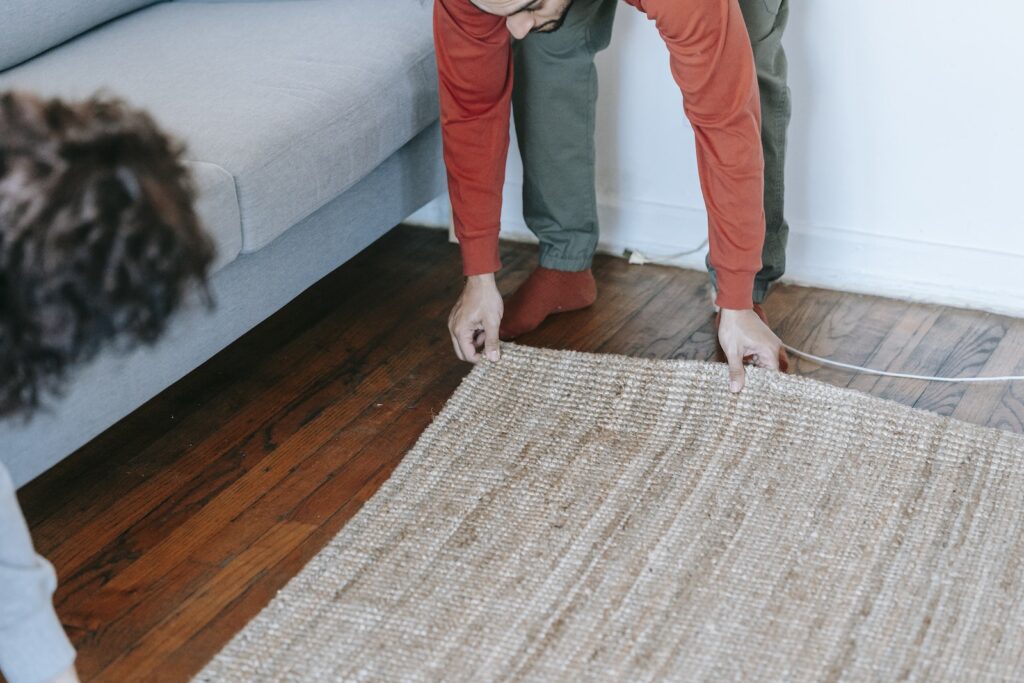Keeping your home clean can sometimes feel like an uphill battle, but with the right organization, it doesn’t have to be. In this article, we will explore simple yet effective ways to organize your home so that it becomes effortless to maintain cleanliness. From decluttering strategies to smart storage solutions, you’ll discover practical tips that will not only transform your living space but also streamline your cleaning routine. Get ready to say goodbye to mess and hello to a cleaner, more organized home.

1. Decluttering
Decluttering is an essential first step in organizing your home and making it easier to keep clean. To start the process, begin by sorting and categorizing your belongings. Take some time to go through each room and designate specific areas for different types of items. This will help you create a sense of order and make it easier to find things when you need them.
Once you’ve sorted your belongings, it’s time to get rid of the unnecessary items. Be honest with yourself and ask if you really need or use each item. If not, consider donating it, selling it, or throwing it away. This will not only free up space in your home, but also reduce clutter and make cleaning much more efficient.
Establishing designated storage spaces is another crucial step in decluttering and organizing your home. Each item should have its own dedicated place to be stored when not in use. This will prevent things from piling up and help you maintain a clean and organized environment.
2. Creating a Cleaning Schedule
Once you’ve decluttered and organized your home, it’s important to create a cleaning schedule to keep it that way. Start by assessing your cleaning needs and determining which tasks need to be done daily, weekly, and monthly. This will depend on factors such as the size of your home, the number of family members, and your lifestyle.
Identifying specific daily, weekly, and monthly tasks will help you prioritize and allocate time for each task. Daily tasks may include making the bed, washing dishes, and wiping down surfaces. Weekly tasks could include vacuuming, dusting, and cleaning bathrooms. Monthly tasks may involve deep cleaning tasks such as washing windows, cleaning curtains, and organizing closets.
Allocate specific time slots for each task in your schedule. This will ensure that you set aside enough time to complete each task effectively and efficiently. Breaking down your cleaning tasks into manageable chunks of time will make them feel less overwhelming and more achievable.
3. Efficient Storage Solutions
Efficient storage solutions are key to maintaining an organized and tidy home. One effective way to maximize storage space is by utilizing vertical space. Install shelves, hooks, or hanging organizers on walls to store items such as books, bags, or kitchen utensils. This will free up valuable floor and counter space, making your home feel more spacious and uncluttered.
Investing in storage containers is another great way to keep your belongings organized. Choose containers in various sizes and shapes to fit your specific needs. Clear plastic containers are particularly useful as they allow you to see the contents without having to open each one. Label each container with its contents for easy identification.
Labeling and organizing your storage spaces is crucial for maintaining an organized home. Use labels or color-coded bins to clearly indicate the contents of each storage area. This will not only help you find things quickly, but also encourage you to put items back in their designated places after use.
4. Implementing Cleaning Habits
Implementing cleaning habits is essential for keeping your home consistently clean and organized. One effective habit is to clean as you go. This means tidying up and wiping down surfaces immediately after use. For example, after cooking a meal, wash the dishes, wipe the countertops, and put away any ingredients or utensils used. Taking a few extra minutes in the moment can save you time and effort later on.
Establishing a cleaning routine is another important habit to incorporate into your daily life. Set aside specific times each day to tackle different cleaning tasks. For example, you might designate the morning for making beds, the afternoon for laundry, and the evening for general tidying up. Having a routine will help you stay on top of your cleaning tasks and prevent them from piling up.
It’s also important to involve all family members in the cleaning process. Assign age-appropriate tasks to each family member and create a chore chart or schedule to ensure everyone knows their responsibilities. By involving everyone, you not only lighten your own workload but also teach important life skills and promote a sense of shared responsibility.

5. Streamlining Belongings
Streamlining your belongings is an ongoing process that involves adopting a minimalist approach. Start by evaluating each item and asking yourself if it truly serves a purpose or brings you joy. If not, consider letting it go. Embracing a minimalist mindset can help you prioritize what is truly important and reduce the amount of clutter in your home.
Regularly reviewing and purging your belongings is crucial to maintain a streamlined home. Take time periodically to go through your possessions and let go of anything you no longer need or want. This will prevent things from accumulating and ensure that your home stays clutter-free.
When organizing sentimental items, it’s important to create a designated space for them. Consider using storage containers or bins specifically for sentimental items and label them accordingly. This will keep these precious belongings safe and organized while still allowing you to cherish and enjoy them.
6. Practical Furniture Arrangement
Practical furniture arrangement is key to creating a clean and organized living space. One way to maximize open space is by removing any unnecessary furniture. Only keep furniture that serves a purpose and contributes to the functionality of the room. This will create a more spacious and uncluttered feel.
Incorporating versatile furniture is another effective strategy. Opt for furniture pieces that serve multiple purposes or have built-in storage. Examples include ottomans with hidden storage, beds with drawers underneath, or coffee tables with shelving. Versatile furniture not only saves space but also provides additional storage options.
Utilizing multi-purpose furniture can also help streamline your belongings. Look for pieces that have multiple uses, such as a desk that folds down into a wall-mounted shelf or a dining table that doubles as a workspace. This will allow you to make the most of your space and reduce the need for extra furniture.
7. Utilizing Storage Zones
Creating specific storage zones for different items is a practical way to keep your home organized. Assign areas or rooms for specific categories of belongings. For example, designate a pantry for food items, a closet for clothing, or a garage for tools and outdoor equipment. This will make it easier to locate items and encourage you to return them to their designated zones.
Keep frequently used items within reach to make daily tasks more efficient. For example, store cooking utensils close to the stove, keep frequently worn shoes by the door, or place cleaning supplies under the bathroom sink. Having easy access to commonly used items will save you time and effort in your daily routine.
Creating zones for specific activities is also a helpful way to keep your home organized. For example, designate a reading corner with a comfortable chair and a bookshelf, or create a designated workspace with a desk and supplies. Having dedicated areas for specific activities will promote productivity and prevent clutter from spreading throughout your home.
8. Developing Daily Cleaning Habits
Developing daily cleaning habits is essential for maintaining a clean and organized home. Making the bed every morning is a simple habit that can instantly make your bedroom look neater and more put together. It takes only a few minutes but can have a significant impact on the overall feel of the room.
Wiping down surfaces after use is another important habit to incorporate into your daily routine. Keep a stash of cleaning wipes or a microfiber cloth on hand to quickly clean up spills, remove dust, and prevent surfaces from becoming sticky or dirty. This habit will help you maintain a clean and sanitary environment throughout your home.
Keeping dirty laundry off the floor is crucial for preventing clutter and maintaining a tidy space. Invest in hampers or laundry baskets and encourage family members to use them. Ensure that each person has their own designated area for dirty laundry to avoid mix-ups and make laundry day more efficient.
9. Regular Maintenance and Deep Cleaning
Regular maintenance and deep cleaning are important for keeping your home in top shape. Set aside dedicated time for maintenance tasks such as checking for leaks, replacing air filters, and inspecting appliances. By addressing small issues before they become major problems, you can prevent costly repairs and keep your home running smoothly.
Establishing a deep cleaning routine is crucial for maintaining a clean and healthy living environment. Schedule times throughout the year to tackle deep cleaning tasks such as washing windows, deep cleaning carpets, or decluttering storage areas. These tasks may require more time and effort but are necessary for maintaining a high level of cleanliness.
Hiring professional help, if necessary, can be a smart choice for more in-depth cleaning tasks. For example, scheduling a professional carpet cleaning or hiring a cleaning service for a deep clean can save you time and ensure a thorough job. Consider your budget and needs when deciding if professional help is necessary.
10. Involving the Whole Family
Involving the whole family in the organization and cleaning process is not only practical but also teaches valuable life skills. Assign age-appropriate tasks to each family member and create a chore chart or schedule to ensure everyone knows their responsibilities. This promotes a sense of shared responsibility and instills habits that will benefit everyone in the long run.
Teaching kids organization skills is essential for their future success. Start by teaching them how to sort and categorize their belongings and establish designated storage spaces. Encourage them to clean up after themselves and make it a fun and rewarding activity. By involving them in the process and teaching them early on, you are setting them up for a lifetime of cleanliness and organization.
Rewarding and motivating family members is a great way to encourage participation and maintain momentum in the cleaning and organization process. Consider implementing a reward system, such as a sticker chart or a small treat, to recognize and celebrate accomplishments. This will foster a positive atmosphere and make cleaning and organizing more enjoyable for everyone involved.
In conclusion, organizing your home to make it easy to keep clean requires a systematic approach. By decluttering, creating a cleaning schedule, implementing efficient storage solutions, developing cleaning habits, streamlining belongings, arranging furniture practically, utilizing storage zones, developing daily cleaning habits, regular maintenance and deep cleaning, and involving the whole family, you can create a clean, organized, and functional living space. Remember, consistency and persistence are key, so don’t be afraid to adjust and refine your systems as needed. With time and effort, you can transform your home into a haven of cleanliness and order.



